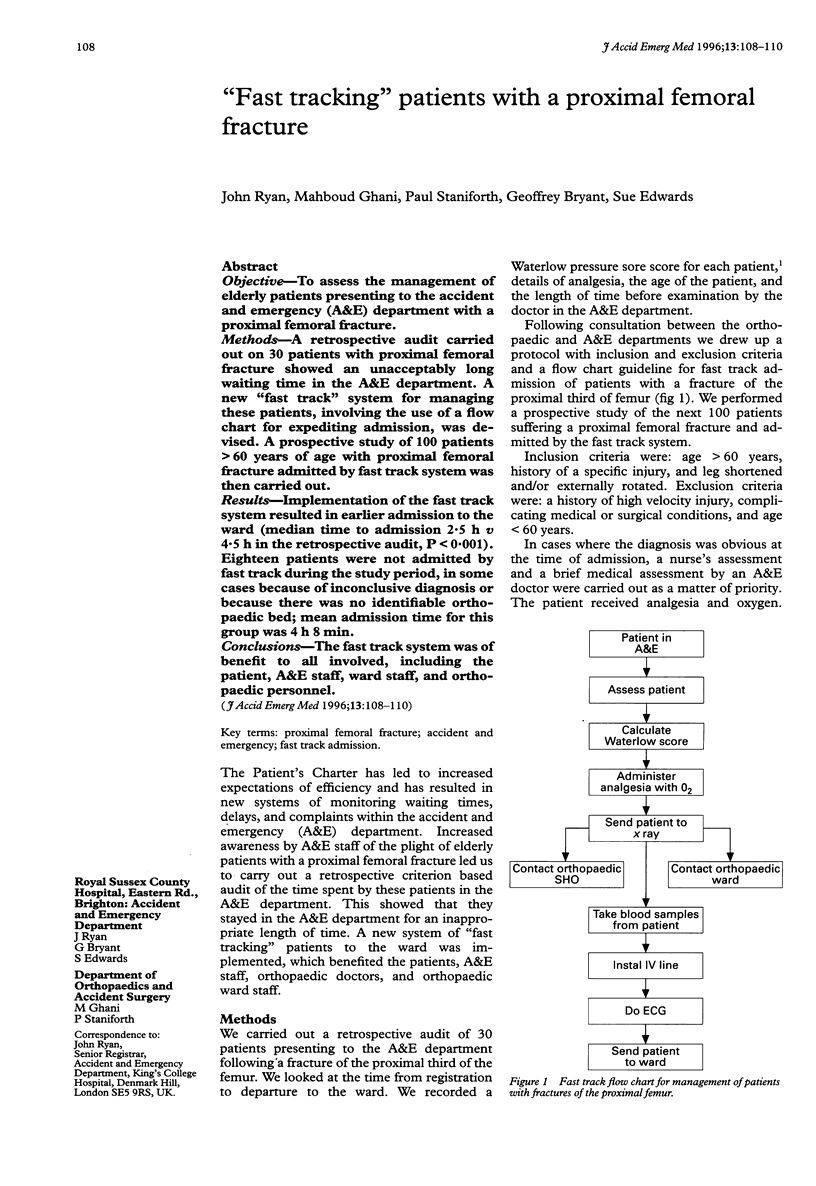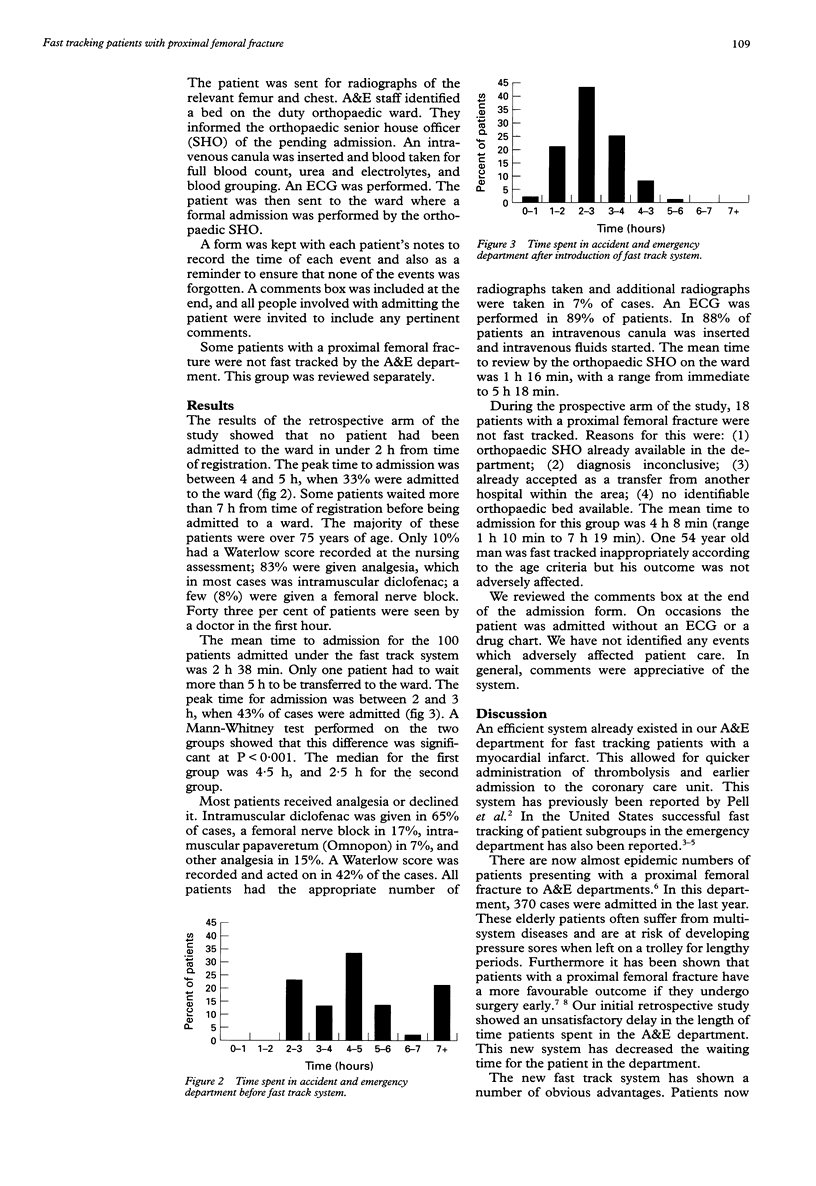Abstract
OBJECTIVE--To assess the management of elderly patients presenting to the accident and emergency (A&E) department with a proximal femoral fracture. METHODS--A retrospective audit carried out on 30 patients with proximal femoral fracture showed an unacceptably long waiting time in the A&E department. A new "fast track" system for managing these patients, involving the use of a flow chart for expediting admission, was devised. A prospective study of 100 patients > 60 years of age with proximal femoral fracture admitted by fast track system was then carried out. RESULTS--Implementation of the fast track system resulted in earlier admission to the ward (median time to admission 2.5 h v 4.5 h in the retrospective audit, P < 0.001). Eighteen patients were not admitted by fast track during the study period, in some cases because of inconclusive diagnosis or because there was no identifiable orthopaedic bed; mean admission time for this group was 4 h 8 min. CONCLUSIONS--The fast track system was of benefit to all involved, including the patient, A&E staff, ward staff, and orthopaedic personnel.
Full text
PDF


Selected References
These references are in PubMed. This may not be the complete list of references from this article.
- Clark R. B. Fast track. Ann Emerg Med. 1988 May;17(5):543–544. doi: 10.1016/s0196-0644(88)80256-7. [DOI] [PubMed] [Google Scholar]
- Fox H. J., Hughes S. J., Pooler J., Prothero D., Bannister G. C. Length of hospital stay and outcome after femoral neck fracture: a prospective study comparing the performance of two hospitals. Injury. 1993 Aug;24(7):464–466. doi: 10.1016/0020-1383(93)90151-u. [DOI] [PubMed] [Google Scholar]
- Lord S. R., Sinnett P. F. Femoral neck fractures: admissions, bed use, outcome and projections. Med J Aust. 1986 Nov 17;145(10):493–496. doi: 10.5694/j.1326-5377.1986.tb139447.x. [DOI] [PubMed] [Google Scholar]
- Meislin H. W., Coates S. A., Cyr J., Valenzuela T. Fast Track: urgent care within a teaching hospital emergency department: can it work? Ann Emerg Med. 1988 May;17(5):453–456. doi: 10.1016/s0196-0644(88)80235-x. [DOI] [PubMed] [Google Scholar]
- Pell A. C., Miller H. C., Robertson C. E., Fox K. A. Effect of "fast track" admission for acute myocardial infarction on delay to thrombolysis. BMJ. 1992 Jan 11;304(6819):83–87. doi: 10.1136/bmj.304.6819.83. [DOI] [PMC free article] [PubMed] [Google Scholar]
- Wallace W. A. The increasing incidence of fractures of the proximal femur: an orthopaedic epidemic. Lancet. 1983 Jun 25;1(8339):1413–1414. doi: 10.1016/s0140-6736(83)92358-9. [DOI] [PubMed] [Google Scholar]
- Wright S. W., Erwin T. L., Blanton D. M., Covington C. M. Fast Track in the emergency department: a one-year experience with nurse practitioners. J Emerg Med. 1992 May-Jun;10(3):367–373. doi: 10.1016/0736-4679(92)90345-t. [DOI] [PubMed] [Google Scholar]


